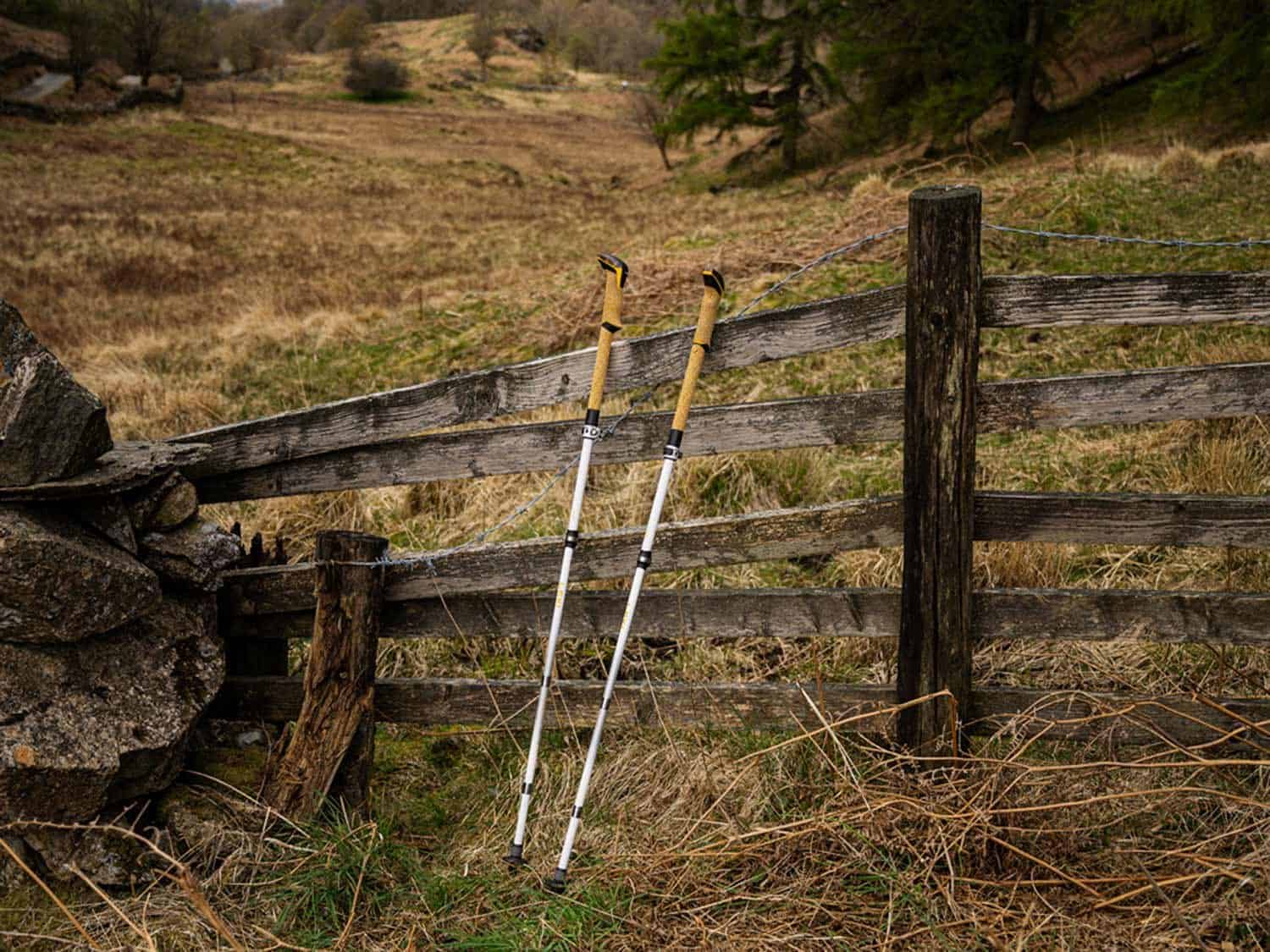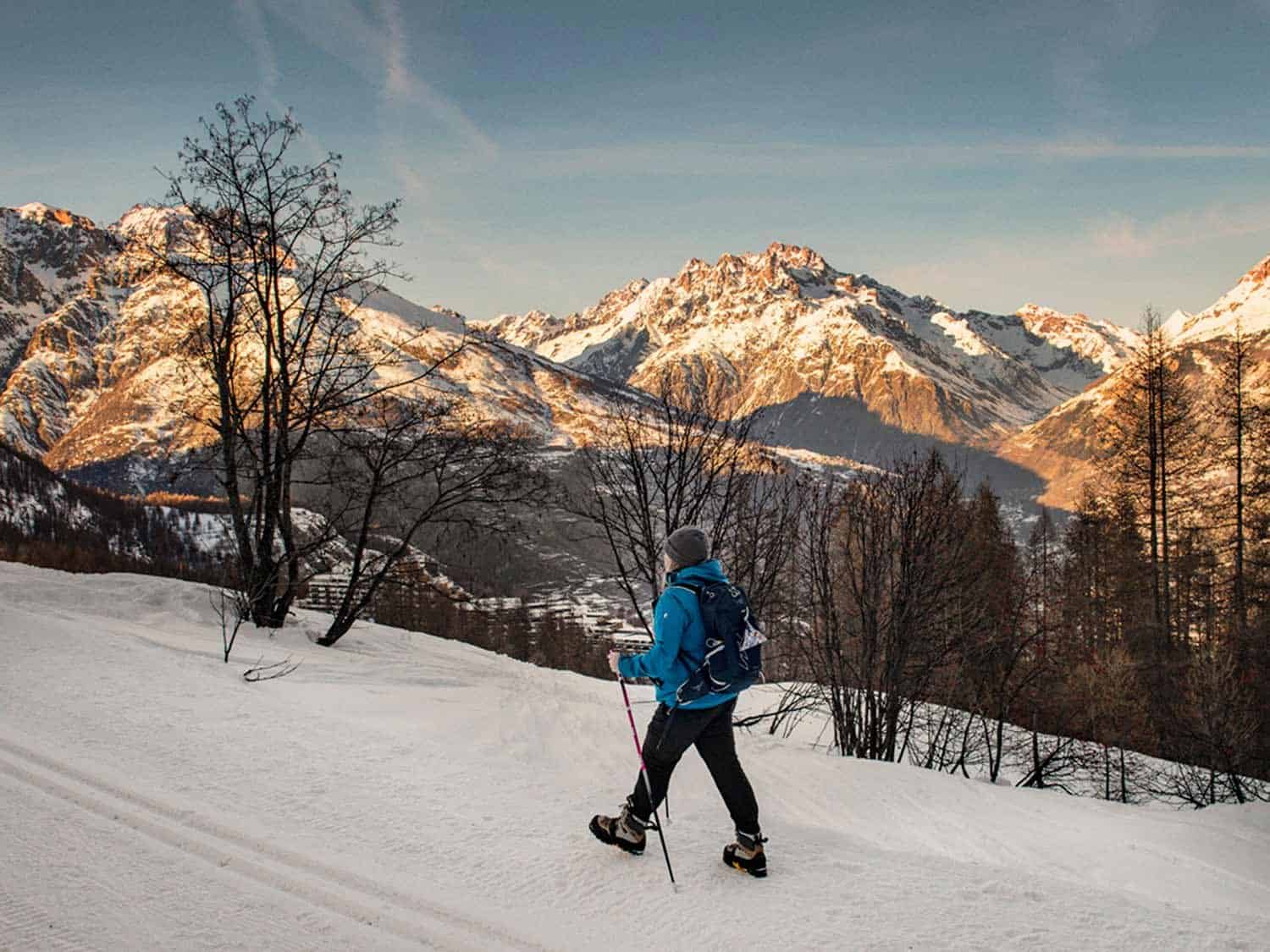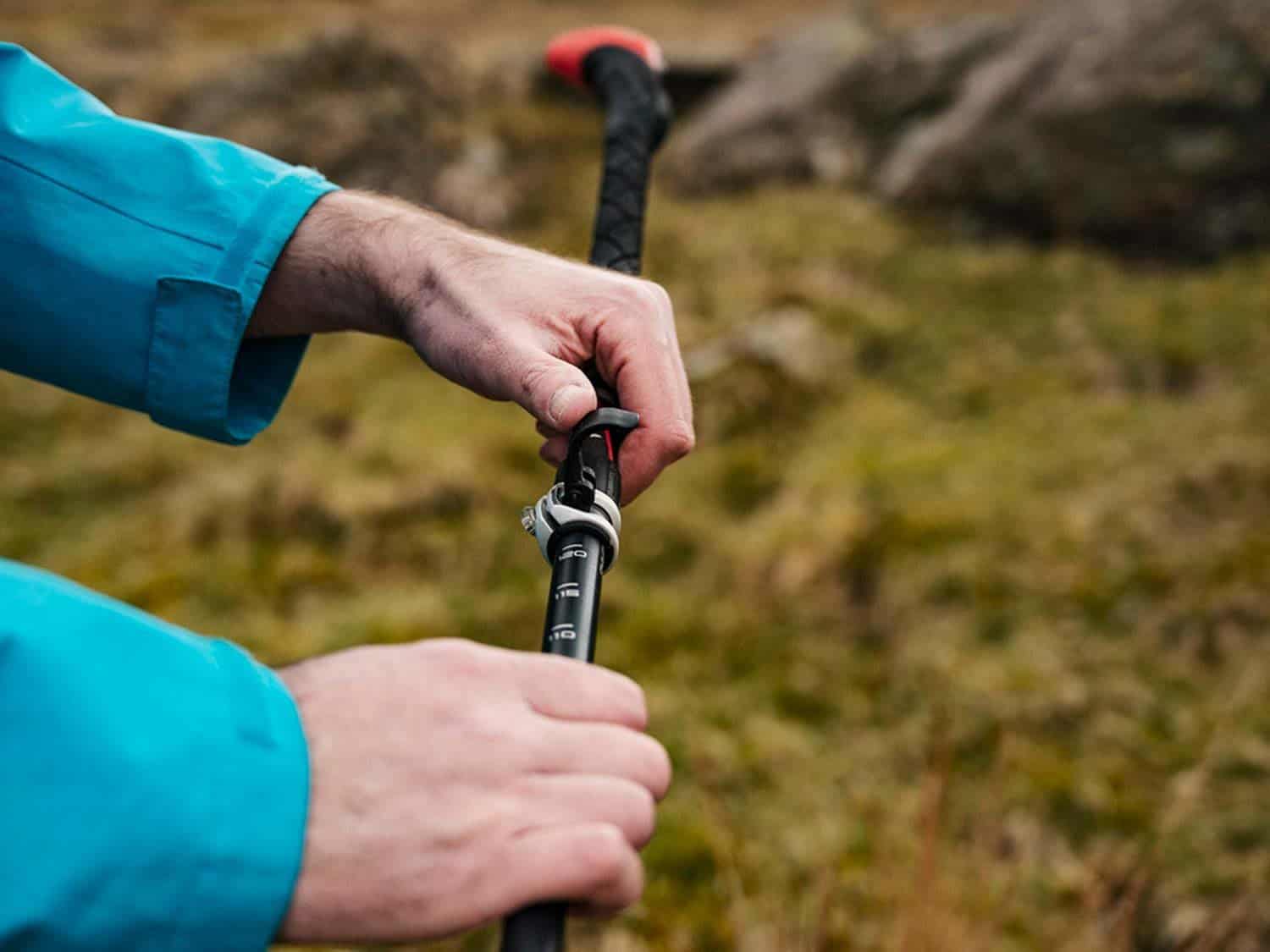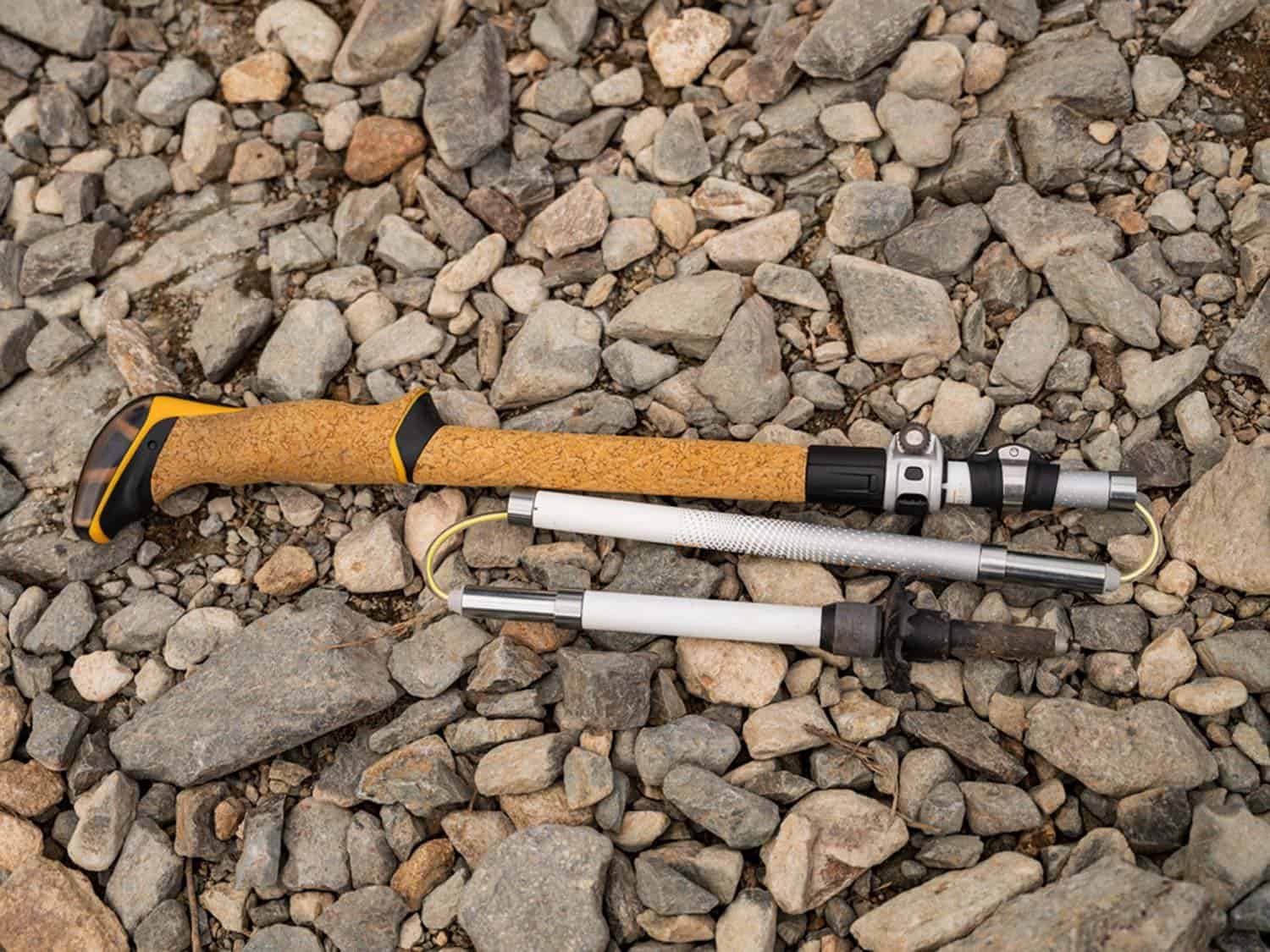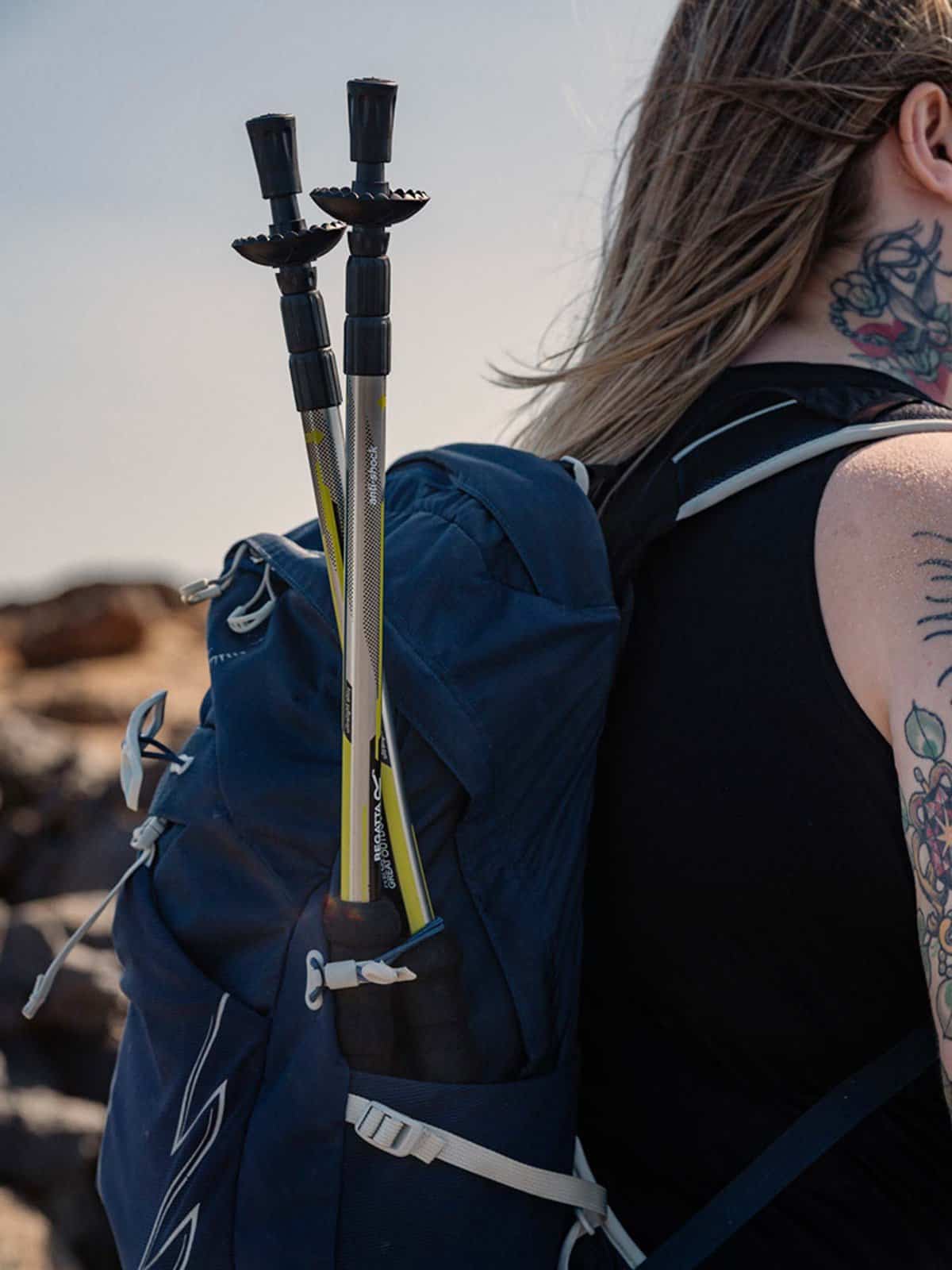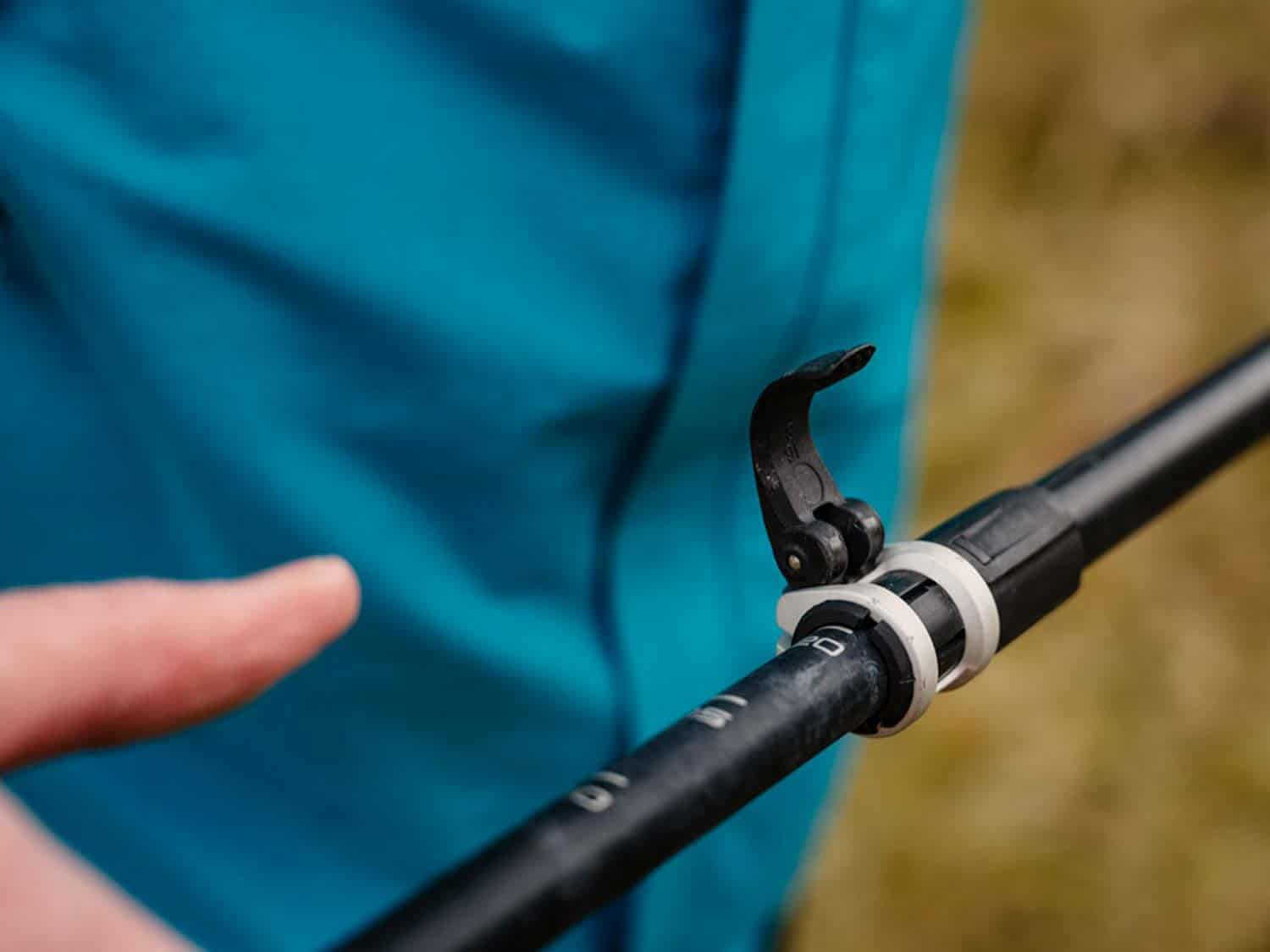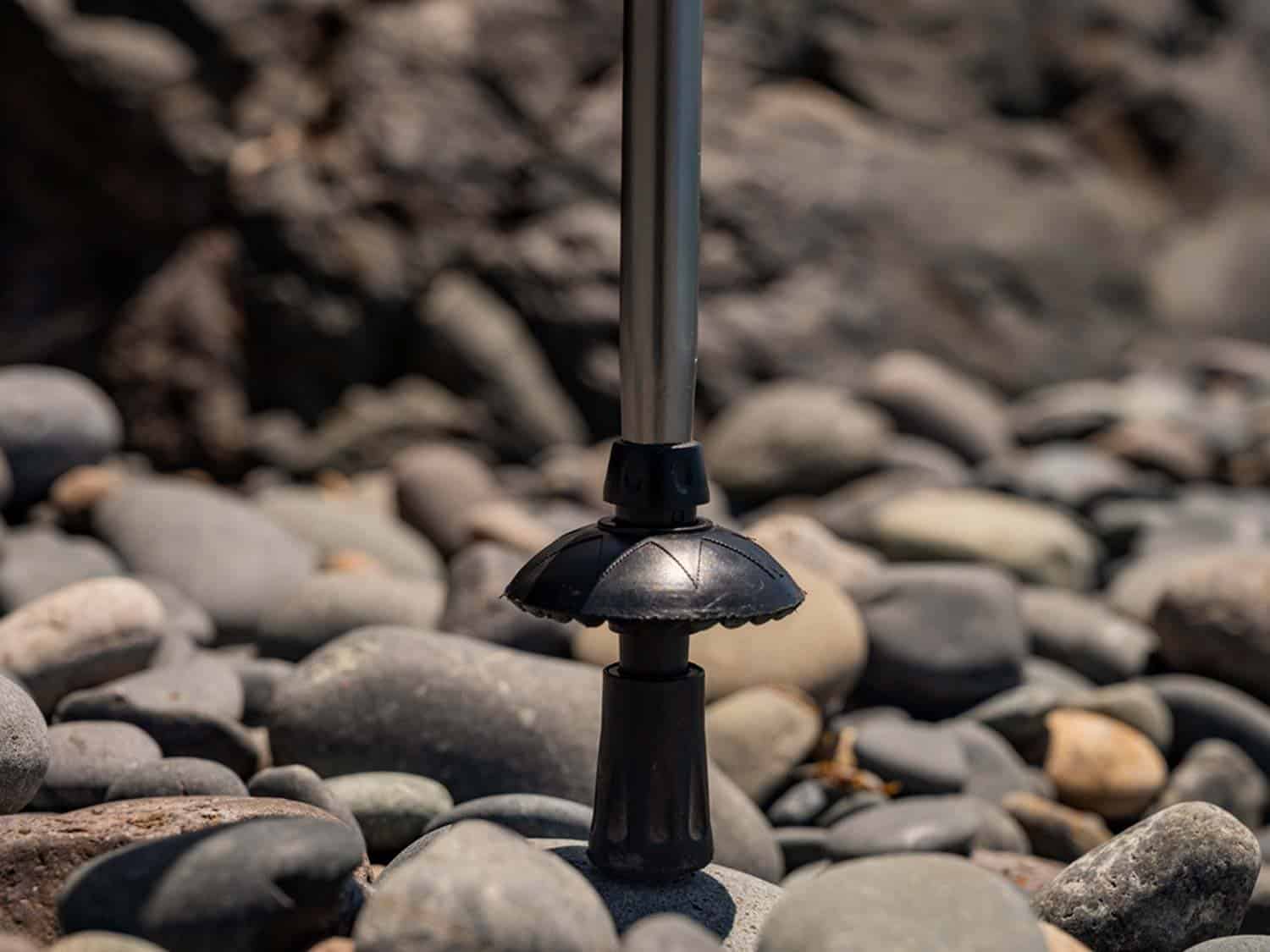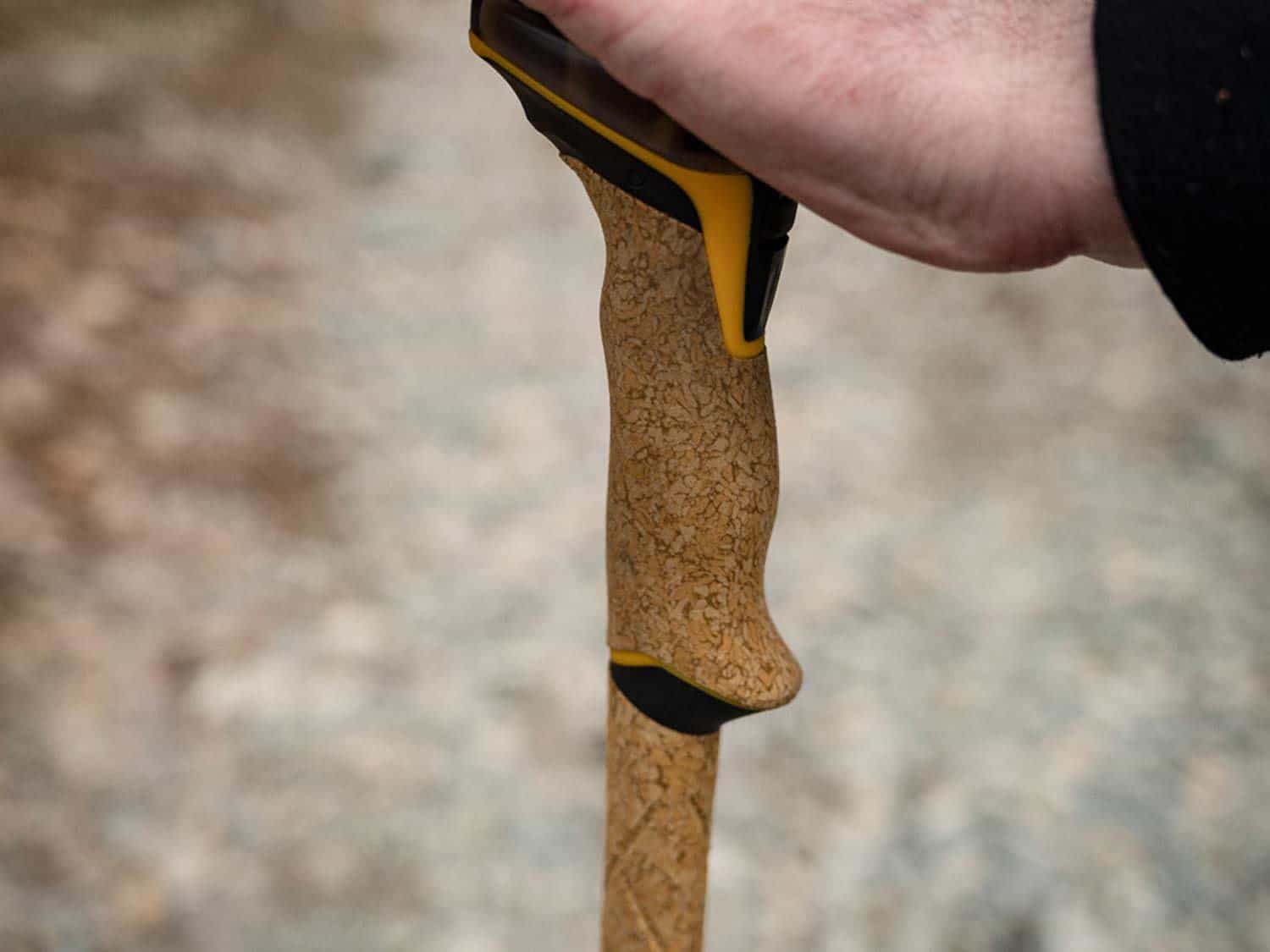Trekking poles have really risen in popularity in the last few years, and for good reason. Not only do they help reduce the load from the lower part of your body, but they can actually help you enjoy your hike more and push things further. If you’re backpacking, or carrying a large pack, they can make all the difference, as they allow you to introduce your core and upper body into the distribution. They’re also fantastic at helping you when going uphill, but also have a significant benefit when going downhill as they massively reduce the impact on your knees, legs, feet and ankles. This can dramatically help with recovery from your hike, but also make the experience much more fun, allowing you to concentrate on the views whilst you’re out on the trail. They’re also great if you need that extra bit of balance coming down a mountain side – for example, you can use them to help steady yourself as you come down a steep rocky staircase or a steep hill.
We’ve personally been massive fans of trekking poles for years and would find it tough to hike without them now. In fact, when we do, we are incredibly aware of just how much achier our leg muscles feel the following day, and how much further they’ve allowed us to go. Once you try them out, you’ll really see the benefits in the same way as comfy hiking boots or a well fitted backpack. Here are our tips for helping find the right trekking pole for you and your needs out on the trail.
Editor’s note: This article is part of our guide to the very best trekking poles of 2024, be sure to check out the rest of this guide for our top buying tips:
Table of Contents
ToggleWatch our trekking pole buying advice video to find the perfect pole for your next hike
Types of Trekking Poles
There are generally four types of trekking poles and hiking poles you’ll find on the market, and each has its advantages and disadvantages, so it’s about looking at what best suits the majority of places and circumstances you’ll use them in. The most common variants are fixed length poles – most often seen used by skiers, Nordic walkers etc. Three section telescoping – which allows the pole to extend out from a shorter, packed size into a sturdy usable pole. A folding pole, which usually has a smaller packed down size and is lightweight and easy to transport. Then finally, combination trekking poles that make use of elements from both telescoping and folding poles.
Fixed-length Poles
These can also be referred to as Nordic Walking poles or trekking poles. Generally, a fixed length pole is something you’d find in a scenario where you’d expect to use the pole for the entire time you were outside. This is why they are very common with skiers or Nordic walkers – particularly so with Nordic walking where the integration of the hand and pole movement is integral to the rhythm of the walk. Fixed length poles tend to be lighter than their competition – and this is fairly simple as to why – there are less parts to contend with. Whilst telescoping or folding trekking poles have fasteners, fixtures and extra components to deal with, a fixed length trekking pole is much simpler in design. Whilst this can be great, you do also loose the ability to pack your fixed length trekking poles away in a backpack or be easily stowed in your luggage when travelling. They’re one of the oldest designs out there and still favored by many, but can actually be quite specialist if you want an all round trekking pole that you can carry with you at all times.
Three Section Telescoping
Three section telescoping trekking poles are some of the most popular you’ll find out there. Because of their design and structure, they are also some of the strongest and most durable trekking poles you can find too. However, this does have an impact on their packed down weight and can often cause problems if you like to alternate between using your poles and not on the trail. Or if you need to take public transport on route to your hike. We’ve had experiences when using telescopic hiking poles, and they’ve been packed down in the side of a bag where we’ve needed to duck underneath a low hanging rock or tree and they’ve become stuck. They’re typically heavier than folding trekking poles, but what you increase in weight, you also get a great increase in durability. Their weight and packed size really are the only downsides of telescopic trekking poles, and this can usually be made up by their usually cheaper price point and durability.
Folding
Fully folding trekking poles have been a bit of a revelation in the hiking pole market and present a really versatile option, especially if you know you’ll want to alternate between using trekking poles and not. Scenarios where this might the case is if you have limited mobility and know you may need the extra boost and support that a trekking pole can give you. They’re great if there are sections of the trail you feel don’t need them (we’ll typically start using trekking poles once we approach an uphill section onwards) or if you’re climbing, the fact that they can fold neatly into your backpack can make all the difference. Whilst the lightweight features and adaptability of folding poles is great, they can lack the ability to extend as long as some taller hikers might need, so it’s always worth making sure that the full extended length is going to be enough for you before buying. This can easily be done by placing your arm out in front of you straight and measuring from the ground up to where your hand is with a tape measure and comparing it to the length of the pole measurements. In our overall guide to the best trekking poles out there, we’ve listed this information to make things easier for you. This also applies to the minimum length for shorter hikers.
Combination
Many newer designs out on the market make use of a combination set up. This generally combines two sections that are folding and one section that telescopes. This allows you to extend the telescoped section for better adjustment for your height and for different scenarios whilst also allowing a very small packed down size similar to a fully folding trekking pole. This type of trekking pole is one of our favorites out there because it takes the best elements of a telescopic trekking pole and a fully folding trekking pole to make something that feels really robust and good to go in pretty much any scenario you’d find yourself needing a trekking pole. They are typically heavier than a fully folding trekking pole, but the extra weight is generally negligible, is still lighter than a telescopic pole and suitable for a larger range of user heights.
Packed Size
The importance of the packed down size of your trekking pole will really vary depending on where you expect to use them the most. For example, if you know you’ll need to take public transport to the trailhead, having a trekking pole that packs down shorter could be a good option to prevent any problems taking your bag on or off on a crowded bus or train. This is also the same if you know you’re likely to encounter obstacles on the trail or more technical terrain. For example, if you know you’ll need to work your way through a scramble or boulders, being able to pack down your hiking poles snugly in your backpack can be really beneficial. This could also be the case too if you only need your trekking poles for extra support and stability. If you know you’re going to be travelling with your trekking poles, also be sure to look at the packed size (we’ve listed this in our easy use comparison of 12 of the best trekking poles out there). You’ll want to make sure they fit easily within your luggage.
Pole Adjustment Mechanism
It’s pretty common these days to see the majority of trekking poles our there be offered with a lever lock adjustment, and in fact, this seems to have generally replaced most twist lock systems, seen as an older design at this point. In fact, only one set of trekking poles in our reviews, the Regatta Ultralight Walking Pole use the twist lock system. Whilst lever locks are fantastic, and offer a secure fasten that is unlikely to move during use, they can also be quite tight to use, so if you struggle with strength in your hands, these may need a little bit of adjustment before you use them on the trail to make sure you can close the lever properly. Twist lock trekking poles can also become less useful over time if they come into contact with things like sand for prolonged periods as small and fine grains can enter the system and make it more difficult to close securely and tightly. On lever mechanism trekking poles, the lever can either be made from plastic or metal. Some people say that the plastic locks can be more prone to breaking when stood on, but we’ve personally never experienced this happening, so we don’t feel like that should be a deciding factor. It’s worth noting though, that generally the trekking poles that make use of a plastic lever system are the lightest in weight.
Basket Size
Firstly, what are trekking pole baskets? They are the little plastic disc that you’ll find toward the bottom of the trekking pole where it meets the ground. They are used to help prevent your pole from sinking into surfaces such as mud, sand or larger rocky cracks and tree roots. They’re very easy to use and install. Most manufacturers offer baskets for your trekking poles in different sizes and configurations, but you may find that some of the cheaper trekking poles our there are more limited in what’s on offer. This is referred to as a fixed basket. Other brands will offer interchangeable baskets that are easily changed. For example, a smaller basket is better for muddy, dirt, gravel or rock based trails whereas a larger basket (sometimes referred to as a snow basket) is better for taking your trekking poles snowshoeing, skiing or mountaineering where there may be snow.
Shaft Material
There really isn’t much variance when it comes to the material of which the ‘body’ of a trekking pole is made from. This is generally, and almost always exclusively either:
Carbon Fiber
Generally, the more pricey trekking poles on the market are made of carbon fiber (but not always). Carbon fiber is lightweight and if weight is your ultimate, especially when backpacking and realizing you might have your trekking poles attached to your backpack sometimes, these might be the right option for you. Carbon fiber is used for trekking poles for the lightness the offer, but can chip or become weaker in certain situations, making them harder to repair.
Aluminum
Generally, aluminum trekking poles are proffered by Arctic/Himalayan expeditions or in colder climates due to the fact that they are easier to repair, and in case of too much load, they don’t break but bend instead (which can generally be rectified on the trail). However, with this comes the fact that aluminum trekking poles are heavier. This can make aluminum poles great for longer distance trips or backpacking expeditions where every gram or ounce isn’t of vital importance. They’re also often cheaper too – and this is certainly mirrored in most of the reviews in our overall 12 best trekking pole round up.
‘Men’s and Women’s Trekking Poles – What’s the Real Difference?
So, upfront, we’re generally not a fan of gendering in products, as we really don’t feel it’s needed, especially in a more inclusive sense. However, trekking poles seems to be one of the areas where gendering – i.e. ‘Men’s’ or ‘Women’s’ poles is a thing. Is there really any difference between them, though? In all of our analysis, we couldn’t see any real difference whatsoever, apart from the maximum and minimum length that the particular trekking pole is offered at. Generally, the trekking poles that start off and finish at a shorter length are marketed as a women’s specific pole, whereas the longer is usually marketed as a men’s specific trekking pole. Unless offered in a color combination that really offends you, there really isn’t very much in it at all, and unless you are shorter than average, you should generally be fine with any trekking pole that is offered as ‘men’s’. The best way to work this out for certain is to measure the length from the ground to your stretched out in front palm of hand and use the information in our easy to use comparison table to see what the maximum and minimum length is of a particular trekking pole and what will suit you best.
Trekking Pole Tips or Feet – Can using a hard tip violate Leave No Trace?
Most trekking poles have a hardened metal tip, though this is often covered with a rubber ‘foot’. Many hikers will choose to remove this foot and use the bare metal tip as it gives better purchase, or grip on certain surfaces. However, the metal top can also mark some types of rock, especially so softer rock like sandstone for example. As such, following the principles of Leave No Trace, you should be mindful of the surfaces you’re walking over and how your hiking poles can potentially damage them. In situations like this, it’s good practice to fit the rubber feet over the hard tip to help prevent damage to delicate natural surfaces.
Weight
Hiking poles aren’t that big really, are they? So does their weight really matter? Well, yes and no. It really depends on what your objectives are.
If you’re going to be using your hiking poles mostly for day hikes or the occasional overnight, then the weight of your trekking poles isn’t going to make the biggest difference. Similarly, if you only intend to go hiking every now and again, some of the cheaper options out there will be more than adequate for what you’ll need. However, if you’re an ultralight backpacker where every ounce or gram counts, you’re going on a longer more technical expedition or something in-between, looking at the lighter weight hiking poles in our round up may be a better option for you. They are also generally on the higher end of the price scale though.
Generally, the more seriously you get into the outdoors and hiking, the more likely weight becomes a deciding factor for you and if you’re looking for an upgrade, considering weight and packed size, we think, are two of the more important elements to consider when making your choice for which trekking pole to buy. This can potentially see your equipment lasting you for years to come and needing to buy less stuff overall that’s fit for purpose. Think about your goals for the next couple of years and what you think would be best fit for purpose. It can really be seen as a solid investment if you spend, or plan to spend, a lot of time outdoors. For example, do you plan on doing a lot of overnight treks or backpacking next year? Are you planning to get into alpinism and would benefit more from a lighter weight trekking pole that can be tucked away easily?
Grip Ergonomics and Material
You’ll generally find two main types of material used for the grip on a trekking pole. There are some cases where rubber is used on more extreme cold designed trekking poles – such as some Nordic walking poles, skiing poles or extreme high altitude mountaineering poles. Generally, on the kind of trekking poles you’re looking at for hiking and backpacking, you’re going to be seeing grips made either of foam or cork. Why is this? Rubber isn’t very absorbent, so used in hotter temperatures can create quite a lot of rub, leading to unpleasant sweating hands and sometimes sore patches/chaffing. Cork is able to mold more naturally to the hand over time and is sometimes described as a softer more organic material. However, it doesn’t generally absorb sweat as well as foam does. Foam is generally more comfortable and it also is much lighter weight than cork. Some trekking poles, such as the Leki Cressida FX Carbon AS presents as a cork grip pole, but this is more for design than anything and is actually a foam grip – meaning it’s sweat absorption properties are much better. Does this all make a lot of difference? It really depends – if you’re someone who sweats a lot, or hikes in hotter climates, then opting for foam grip might be better for you. If you’re hiking in colder temperatures a lot, either cork or foam would work well for you.
Versatility
You can expect to use any of the trekking poles we’ve recommended in our round up for a variety of activities such as hiking, backpacking, climbing and mountaineering as well as snowshoeing and in some instances skiing. Whilst it’s true that some trekking poles are designed for one particular activity in mind, if you like to try out and get involved in a number of outdoors activities, we really recommend it’s best sticking with a pole that’ll be fit for purpose all round. For example, you’ll be less likely to want to use a single length, skiing pole for your lightweight summer hiking trip in alpine conditions.
We’d recommend that if you want a variety of uses out of your hiking pole, to look at something that fits well across the board. Generally, you’ll find this from an aluminum hiking pole with lever lock design. You could also look at a combination trekking pole as outlined earlier on for maximum packed weight. That said though, for the majority of uses, the really lightweight trekking poles we’ve recommended would work really well in most scenarios you could expect to use them and offer you fantastic savings in terms of weight and packed size. It’s also worth thinking in advance about if you can get different baskets from the manufacturer to allow you to extend the use of your trekking pole even further – and you’ll generally find that some of the cheaper poles will be fixed in terms of what basket they come with, so thinking into the future is really helpful here to prevent you potentially having to buy twice.
Conclusion
As you can see, there are many different factors to take into consideration when choosing the right trekking pole for you, but this shouldn’t be complicated, and we hope we’ve simplified what to look for. As with most outdoor equipment, depends on where and when you plan to use them. Within our reviews, we’ve tried to make this as simple to understand as possible, whether this is your first pair or you’re looking to get an upgrade.
Disclaimer: This article contains Affiliate Links. You won’t pay any more for buying through these links, but we may receive a commission from any purchases made through them. As an Amazon Associate, I earn from qualifying purchases. If you choose to support us by buying through our links, we thank you as it helps us to continue providing the resources we do to help you enjoy the outdoors more!

